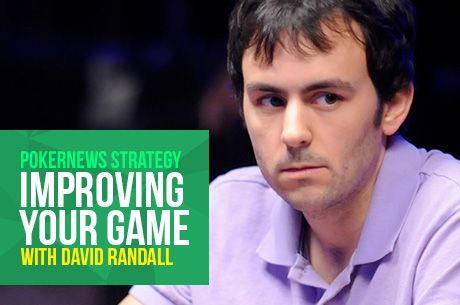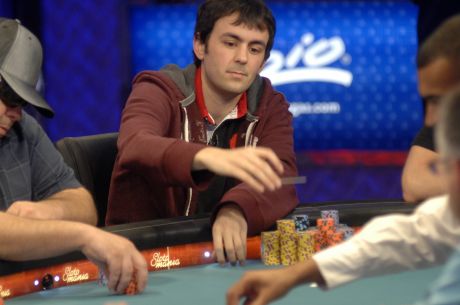Poker Shrink Vol. 68: Opponent Process Theory

OK, this one can get a bit tricky but opponent process theory has some strong applications to poker playing. The basic theory states that emotions are paired, something like a positive and a negative. Fear and relief would be an obvious example.
The observation was made over thousands of examples showing that when one emotion is experienced, the other is repressed. Makes senses you are not likely to be feeling relief from fear while you are being chased by a hungry bear.
a) Emotions are paired as opposites.
b) When you feel one emotion the other is suppressed.
Now mind you, this works both ways. Once the danger is over and you are feeling relief, the fear is then repressed. Discovered next was the real heart of the opponent process theory: when the first emotion is very strong, the opposite emotion when experienced is very low.
Let’s take bungee jumping. The first time you are scared to death but you finally jump and afterward it is just OK. But your buddies who have been jumping a long time and were not as afraid are feeling great relief and a post-jump high. The theory says that the more you get used to the first paired emotion, the higher the experience of the second paired emotion.
This is why street drug use always leads to a disaster. You need more and more of the drug to get the same high, but the opposite reactions (withdrawal etc.) get stronger. The more you are habituated to a drug the stronger the opposite withdrawal reaction will be. As the upside becomes familiar, the downside gets more and more intense.
Now on the positive side, the more you face up to your fears in anxiety-producing situations, the more the positive effects of success and relief will rise. As you become less anxious to speak in front of a group or confront a nasty boss, the stronger you will get because the opposite feelings of confidence and self-assurance will become larger and stronger.
So, on to poker. You really have a problem firing three bullets on a bluff or semi-bluff. It may not be the same fear as running from that angry bear, but it is fear. Fear of losing your money, fear of busting out of the tournament. But you commit to getting the three-bullet bluff into your game, so you just do it. Rather quickly you will discover two things happening. The rush you get from your opponent folding on the river is really great and it gets stronger the more often it happens. Secondly, when the move doesn’t work the resulting letdown just isn’t as big a deal as you remember it the first time your bluff failed.
The key here is that you understand the good emotion – the one you want to get at the end of a winning hand. It will increase as your trepidation over making the move decreases. Let’s think about that for a minute.
I told you that research clearly shows a drug addict gets less of a “good” high as he gets habituated to the drug, and more of the “bad” aftereffects and withdrawal symptoms. Now I am telling you that by pushing through resistance you have at the table, by making stronger moves, by taking risks and making advance plays, you will get a bigger rush, a bigger positive emotional reward from a game you already like to play. You like to play poker, right? So you will naturally enjoy it even more if you take more risks and learn to add a move that right now is intimidating to you.
Risk/reward evaluation: Your game gets better, you feel better, and you win more chips. The only downside is you have to keep finding more complex moves to add to your poker game so that your game will keep getting better, you will keep feeling better, and you will win even more chips. That would be win-win-win!








